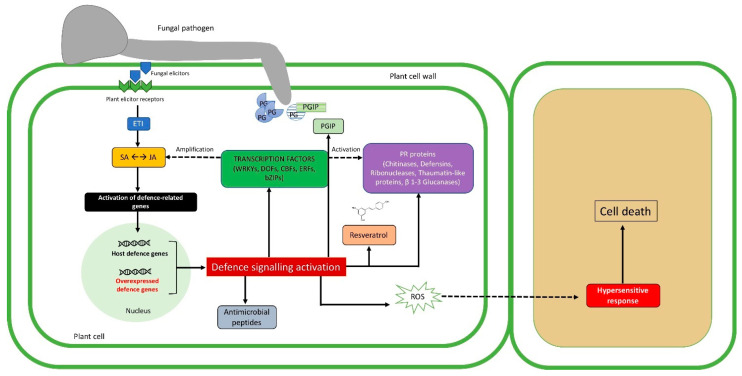Figure 1.
Description of transgenic plant–pathogen arms race during pathogenesis. The first impediment to fungal invasion is represented by chemical and physical barriers already existing before the infection. The trophic activity begins with lytic enzyme production (e.g., polygalacturonase, PG), that can be suppressed by the production of specific inhibitors (e.g., polygalacturonase inhibitor, PGIP), which can be expressed also by the use of genetic engineering techniques. A specific recognition takes place when elicitors coded by avirulence (Avr) genes of the fungal cell are recognized by host receptors, driving effector-triggered immunity (ETI). ETI results in the activation of defense gene expression (i.e., defense molecules, antimicrobial peptides, phytoalexins), through the salicylic/jasmonic acid (SA/JA) signaling pathways [28]. The aforementioned defense molecules together with pathogenesis-related proteins (PRs) and transcription factors can be overexpressed in the host cell, imparting a harmful effect against the pathogen. Intriguingly, transcription factors are responsible for activating plant defense response, and their overexpression leads to the stimulation of SA/JA signaling pathways. Solid arrows and dashed arrows indicate direct or indirect induction processes, respectively.

